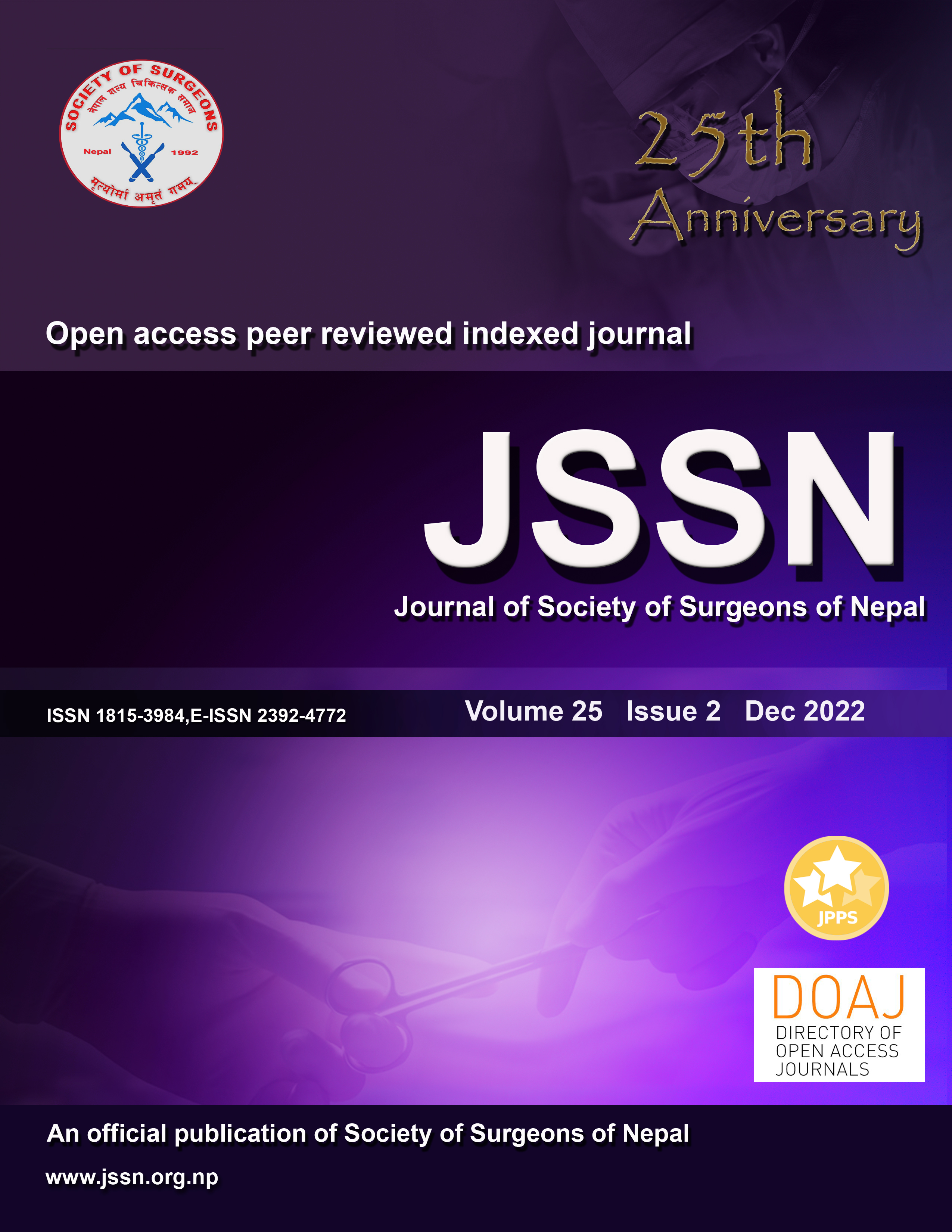Indications and Outcomes of Abdominal Drain in Laparoscopic Cholecystectomy in a Tertiary Care Center in Central Nepal: A Descriptive Cross-sectional Study
DOI:
https://doi.org/10.3126/jssn.v25i2.50809Keywords:
Fever, hospital stay, intra-abdominal drain, laparoscopic cholecystectomy, operative time, surgical site infectionAbstract
Introduction: Laparoscopic Cholecystectomy (LC) is the treatment of choice for symptomatic cholelithiasis. During this procedure, sometimes abdominal drain is placed in the right sub-hepatic space. The main objectives of this study were to assess the indications for the use of intra-abdominal drains (IADs) in elective LCs and its outcomes following LCs.
Methods: This is a prospective descriptive cross-sectional study conducted between November 2017 and December 2018 in the Department of Surgery of a tertiary level teaching hospital in Kathmandu, Nepal. Sixty patients who underwent elective LC with the placement of intra-abdominal drain were selected for the study. The data were recorded in a preformed proforma and analyzed using MS Excel and Statistical Package for Social Sciences Version 16.0.
Results: The total LCs performed during this period was 536. The overall prevalence of IAD placement in LC was 11.19% (n=60), with drains placed more frequently among males than females (27.4% v/s 6.3%). Cholelithiasis with cholecystitis (35%, n=21) was the most common indication for elective IAD placement while adhesions (56%, n=34) was the most common intraoperative indication for IAD in LC. Surgical site infection (SSI) and fever were encountered in 15% (n=9) and 5% (n=3) of the patients respectively. SSI was found to have a positive correlation with the operative time (p=0.01), post-operative hospital stay (p=0.003) and age of the patient (p=0.021).
Conclusion: The prevalence of IAD placement in LC in our study was almost double as compared to that of studies in other countries and predominantly more among males than females. Cholelithiasis with cholecystitis and adhesions were the most common indications for IAD placement. SSI in IAD placement was found to be positively correlated with the operative time, post-operative hospital-stay and age of the patient.
Downloads
Downloads
Published
How to Cite
Issue
Section
License
Copyright (c) 2022 Sandeep Khanal

This work is licensed under a Creative Commons Attribution 4.0 International License.




